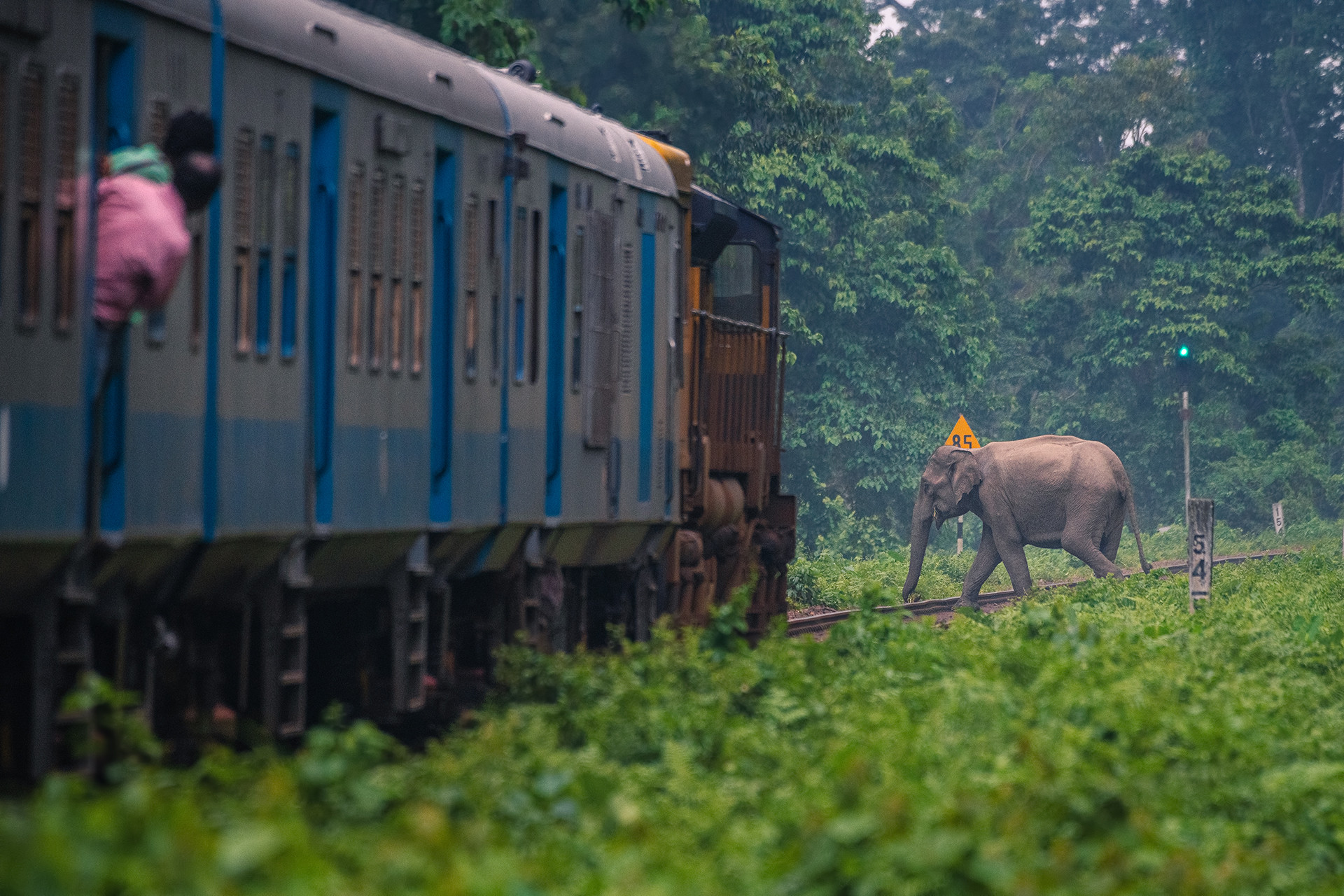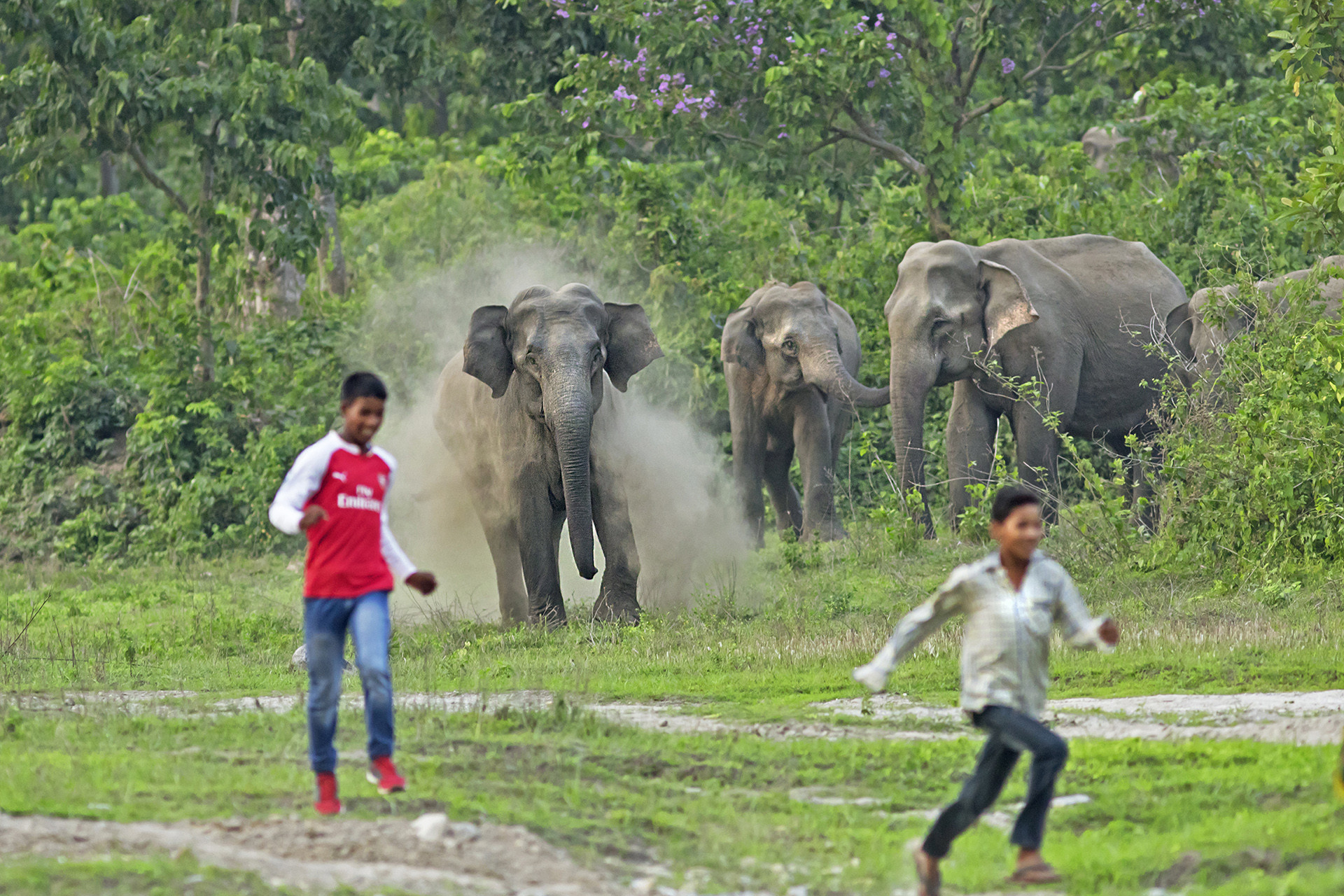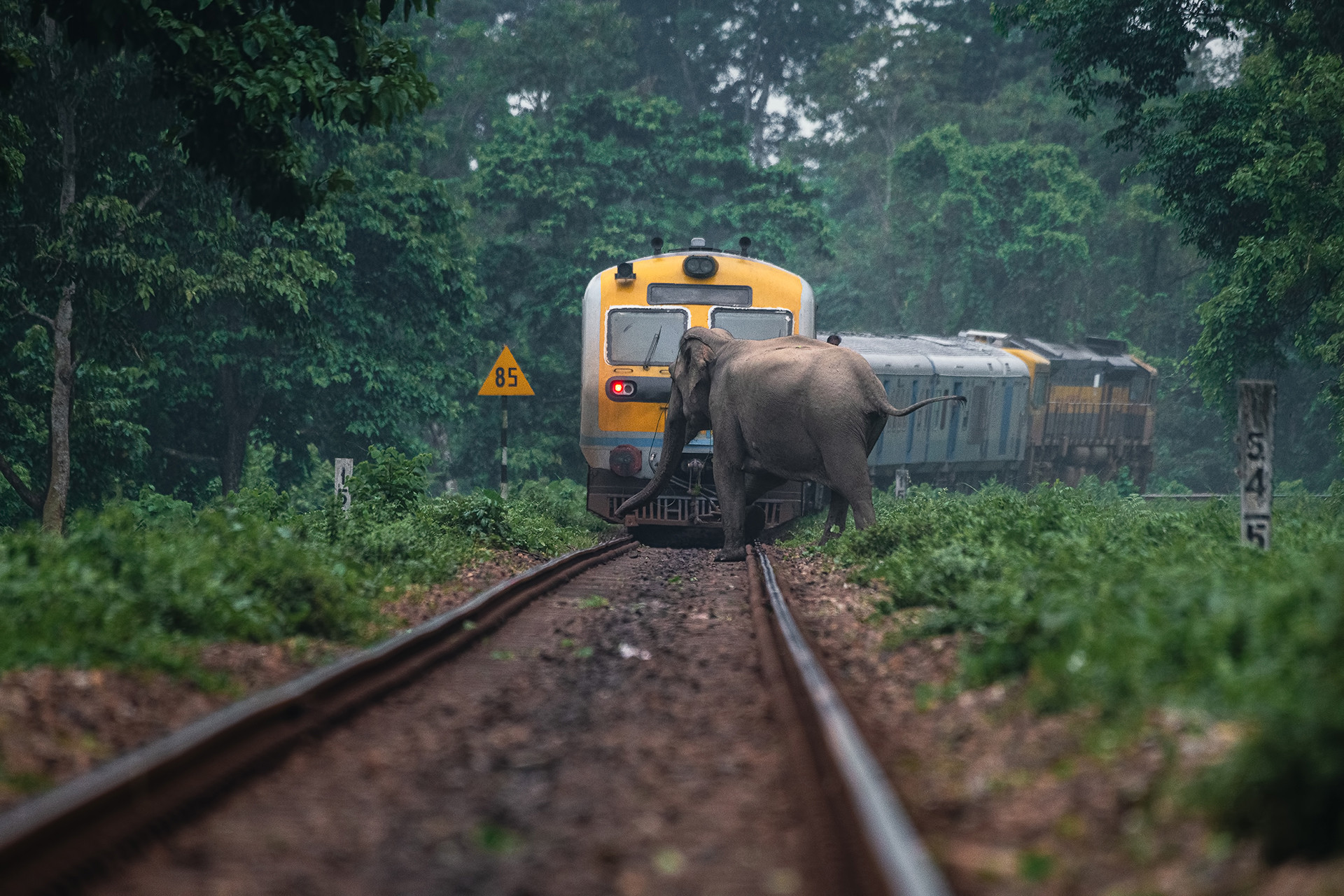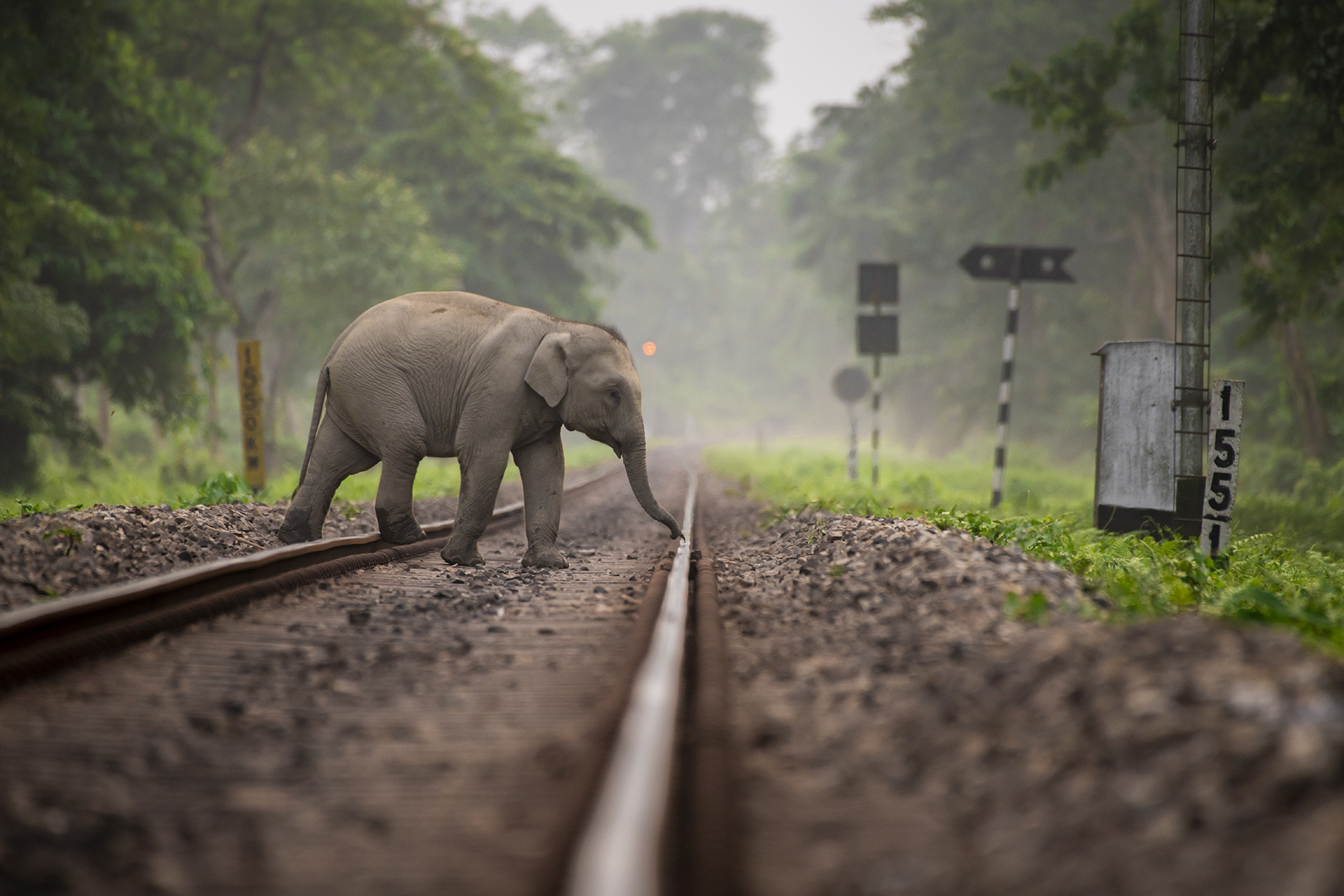The 2020 Call For Code Global Challenge by IBM is calling on developers across the globe to find technological solutions to halt and reverse the impact of Climate Change. To extend support for the initiative, Nature inFocus is publishing a series of Climate Change stories from around the country.
In May, a pineapple and an elephant became national news.
A pregnant elephant died a slow, painful death after consuming a pineapple laced with a bomb intended to kill any wildlife coming to the field. Parts of the animal’s mouth exploded after it ate the fruit, leading to a lonely, agonising death. India was up in arms, and all comments were directed towards two thoughts.
First was the innocence of the animal – a pregnant female, eating a fruit that would end up killing her slowly. Akin to the poisoning of the good and virtuous. The second was the intent. The intent of the bomb was to maim or kill whichever animal chanced upon the pineapple, thus making the whole thing culpable – the very opposite of an unintended accident. Yet, an elephant dies in India because of roads and railways – called linear projects – nearly every month. These are called ‘accidents’. But there is a series of factors at play here which makes railway collisions with animals somewhat of an inevitable conclusion, something as predictable as the death of an animal by eating a bomb.
Adding on to these factors is insidious climate change, causing what is known as a ‘cascade effect’, where the extinction of a particular component of the ecosystem (for instance, an animal or a plant) leads to a devastating series of events capable of destroying entire ecosystems. Elephant habitats comprise a mosaic of open, grassy areas and forests, with plenty of freshwater. Today, the availability of native food sources are generally shrinking. The United Nations-backed Intergovernmental Science-Policy Platform for Biodiversity and Ecosystem Services (also called the IPBES), in a new report, finds the average abundance of native species in most major terrestrial biomes has fallen by at least 20 per cent.
Consider the needs of an elephant which requires 100 kilograms of nutrition every day and large amounts of water. The IPBES has found that between 1700-2000, 85 per cent of wetlands in the world have declined, disappearing at three times the rate of forests (evident in our daily life – most wetlands you would have known as a child are gone). And then, there is global warming itself. The report has synthesised several climate studies, and says that with 2°C warming, 5 per cent of species would be at risk of extinction. If that increases to 4.3°C warming, extinction risk for species increases to 16 per cent. As warming continues, combined with other land-use change, the range an elephant can inhabit may change. The range of the plant species it eats may change too.
It is important to further unpack the idea of an ‘accident’ between the elephant and the train. The premise is that the driver couldn’t see the animal, and the misguided, unpredictable animal doesn’t know better than to come on the track.
Imagine this scene, which recently played out in West Bengal. An elephant herd goes to a field at night. Years ago, the field was a sub-Himalayan forest, possibly even evergreen or deciduous. A group of people are waiting there with fire-bombs (also called hula) or firecrackers, which they fling at the elephants. They beat drums too to get the elephants away from the cultivated fields. The din, piercing light and fire follow the elephants as they ricochet madly from farm to farm. From there, they rush panic-eyed and trumpeting to a railway line, crossing it with the intention to get away from the fire and the mob. A train is coming, and the youngest of the elephants, a calf, is not able to cross on time. The mother and aunts try to rescue their calf. An elephant herd is like a creche that sticks together, with all the females helping in raising the calf. By hitting the train, not only does the calf die, so do the mothers and aunts, heartbreakingly often. This effectively makes a single railway encounter a mass elephant graveyard.
The issue is no more of animal decision-making as a measured process, where the animal has the opportunity to weigh its choices to avoid a train. Elephants are being chased with regularity in Assam, West Bengal, Odisha and other states. Railway lines cut through forests or elephant habitats, and this leads to the inevitable conclusion of trains encountering elephants. Sometimes, this is caught on camera such as in Dooars, and people intervene to save elephants (survival is rare – a train hitting an animal leaves slim chances of recovery). At other times, one hears of the elephants only after the act of violence is over, and by then they are long dead. Between 2015-19, 62 elephants died after being hit with trains.
In cutting up the larger landscape, and putting trains in elephant stretches without early warning systems, we are the ones causing this conflict.
India has numerous railway lines that run through forests or elephant areas, and clearances are still being sought for new railway lines, which will further slice through elephant strongholds. Karnataka is trying to push through the Hubbali-Ankola railway line in the Western Ghats, which will cut around 2 lakh trees, bisect the corridor between a tiger reserve and a conservation area, and cut through a habitat which is estimated to have 70 elephants. The Sevoke-Rangpo line in Sikkim will also cut through elephant corridors. A recent auction of coal mines (in Central Indian forests) is likely to lead to the laying of more railway lines.
While new railway lines should try to avoid forest areas, existing railway lines urgently require mitigation through technological intervention.
Two options are possible. One is a system that warns the animal of an oncoming train. This could include light or audio warnings to the elephants, working on a relay system as the train makes its way along the track. This should be prioritised in bends and densely forested areas which don’t have visibility, and at known elephant crossings. We also need to understand animal behaviour here – a loud ‘alarm’ sound coupled with blinding lights are unlikely to cause animals to go off the tracks. Rather, they may remain transfixed at the spot, similar to how people develop paralysis from fright response. Thus, warnings need to be calibrated to be alarming but not confounding.
The other, more sophisticated option is the need of the hour. This entails creating a warning system for us, rather than the elephants. A successful early warning system for drivers and other railway officers will reduce unpredictability and even shift the current odds against conflict. It is unfair to expect a train driver to drive a train safely through rain, fog and difficult terrain, and also be alert to elephants. What we need is a system that is predictable and does not just leave things up to the temerity of individuals.
Sensors that can warn the driver of movement on tracks can be developed (such as underground or overground electric sensors). They could be infrared sensors or radar sensors (such as a microwave radar sensor). In places where visibility is poor, these may need to be matched with cameras.
Another potential idea is recorders that can capture the infrasonic sounds that elephants make, tied to an AI or software which can quickly interpret the elephant frequency, and report their arrival. We will also need to work on directionality – to understand if elephants are coming closer or going further away from the tracks. All solutions – whether to warn elephants or to warn us – will probably require a suite of combinations to be put in place after studying the area, starting with hotspots or particular stretches of railway lines.
But elephants don’t read signboards, and they didn’t cause climate change. We need to step up, and technology that is adaptive and intuitive can be an urgent way of carrying out our responsibility towards these animals.
They say an innocent life should not go in vain. It is not just that one elephant mother who we have come to name or mourn that we need to stand up for. Developing these technologies will save entire elephant herds. The elephant family – a wide network of herds over entire biogeographies – waits for the application of our heads and hearts both.
The author thanks Girish Kolhe for his inputs.
Views expressed by the author are personal.
If you are a developer interested in helping address some of these challenges, visit the Call For Code website and get started on your idea. Winners will be awarded $200,000, receive open source support from The Linux Foundation, and will get a chance to meet mentors and investors. You will find ample resources and support to see your technology come to life.









